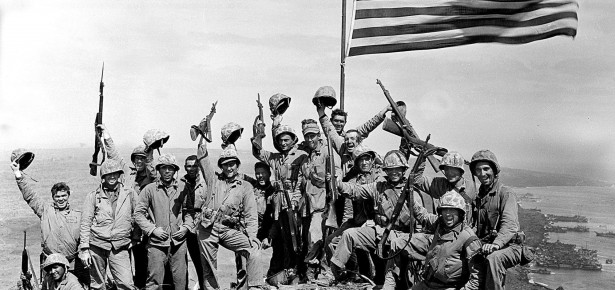
by Michael Geyer and Adam Tooze
The First World War had been won by global economic force. The global superiority of the victorious powers, foremost the USA and Great Britain, was smothering in the aftermath of the war. In the 1930s, it took the brinkmanship of states set on destroying the international system, a veritable revolution in international affairs, to challenge this strategic advantage. Their defiance of global hegemony unleashed a world-wide mobilization quite unlike anything previously seen in the history of the modern state system. There had been an arms race before 1914, but it was dwarfed by the industrial armaments process in the decade between 1931 and 1941 and the totalizing mobilization of belligerent nations between 1941 and 1945. The Second World War was, as Jeffrey Fear puts it in his essay, a ‘war of factories’ – a theme that is also echoed in the plate section. In the course of the war the practices and institutions of production, finance, research and development, logistics and consumption were all massively reshaped and redirected.
There can be little argument that the Second World War was a key moment in the process of making and remaking the national and international economy
There can be little argument that the Second World War was a key moment in the process of making and remaking the national and international economy. Indeed, a case can be made that the very idea of the national economy as an object of government originated between 1914 and 1945 in an age of totalizing war. Superficially this nationalization of the economy might appear to be counter-posed to globalization, but the more complicated truth is that national mobilization embedded the economies of even the most self-sufficient and reluctant belligerents like the Soviet Union in the world economy. David Edgerton’s essay demonstrates how central the control of resources beyond the nation’s border was for the war effort and how the defence of access routes became a key element of war-making. Indeed, the world’s economy, its choking points, became targets of warfighting. As Volume I of the Cambridge History of the Second World War suggests, the role and place of an ‘economic strategy’ to defeat the enemy was debated controversially among all belligerents. The present volume makes evident that the condition of globality that had acquired such force since the mid-nineteenth century in a process of globalizing marketization continued to unfold but now through the violent and complex dynamic of belligerent mobilization and incorporation across borders. The after-effects of this embedded nationalization of the economy were only undone in the 1970s and 1980s.
It is one of the characteristics of the Second World War that it pitted not simply nation states and their armies, but competing strategies of mobilization against each other. Of course, they did have certain characteristics in common. Thus, one of the dramatic features of totalizing mobilization for war was the shift from generalized media of social circulation such as money, to a specific and direct appropriation of particular materials, people(s) or ideas for highly particular purposes. ‘Appropriation’ in turn now became a process not simply of extraction (of resources, technologies or ideas), but of deliberate creation, research and development, for the purpose of destruction. How these object-driven mobilizations could be achieved, depended in turn on what instruments and what intelligence was available, the configuration of alliances domestic and international, the moment in the war, and the goals that were being pursued by the combatants. In other words, mobilizations by all belligerents were driven to no small degree by the exigencies of war rather than by some kind of deliberate or planned approach. However, they were neither random nor were they the same. Despite their incidental, improvisational and often chaotic quality, they were shaped by and in turn moulded competing wartime political economies.
A distinctive mode of mobilization employed by the Western powers was a highly formalized, public and contractual model. The outlines of this strategy could already be seen in play in First World War bond finance that was taken to an extreme pitch in populist war bond drives. These populist drives were reinforced and expanded after 1939/41 and while no less spectacular, they were now even more encompassing and a lot more coercive. And yet, because the muscular appeal to mass-participation in the war effort was so central, they ended up entrenching a model of bond-owning, democratic capitalism on the one hand and claims to participatory citizenship and a purchase into the largesse of the state on the other. Through these practices of the public, contractual mobilization of entrepreneurs, labourers and consumers, economic liberty came to be a central stake in the war.
Download the full excerpt here.
Latest Comments
Have your say!